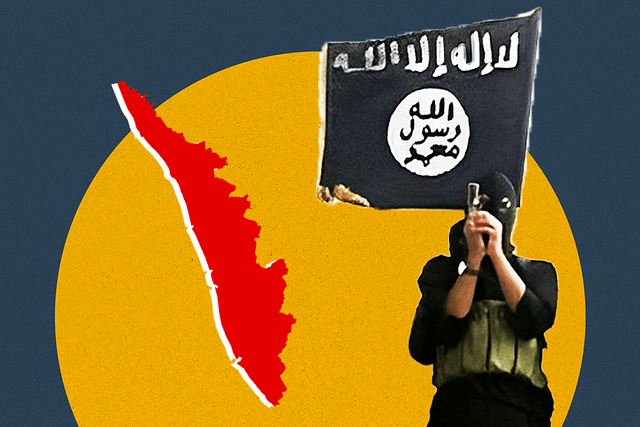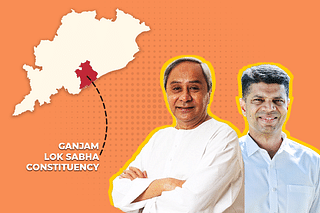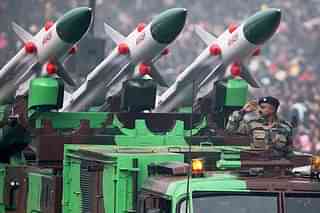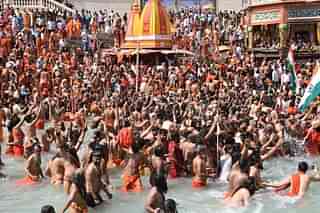Kerala
Another Kerala Man Held For Joining Islamic State: Why Kerala Leads In ISIS Links In India
Swarajya Staff
Mar 06, 2024, 09:56 AM | Updated 12:04 PM IST
Save & read from anywhere!
Bookmark stories for easy access on any device or the Swarajya app.

This week, a man from Kerala living in Afghanistan as an operative of the Islamic State of Iraq and Syria (ISIS) was arrested by Afghan intelligence agencies. Sanaul Islam is currently detained in Kandahar jail.
Afghan authorities reportedly released his picture to their Indian counterparts, and revealed that Islam travelled to Afghanistan through Tajikistan to join the ISIS.
Just a month ago, a court of India’s National Investigation Agency (NIA) convicted another ISIS operative from Kerala, named Riyas Aboobacker, for conspiring to carry out terror attacks in India.
Aboobacker was awarded a 10-year jail sentence and a fine of Rs 1.25 lakh after being found guilty under Section 38 (belonging to a terror outfit) and 39 (giving support to a terror outfit) of the Unlawful Activities Prevention Act (UAPA) and under Section 120(B) (criminal conspiracy) of the Indian Penal Code (IPC). He too went to Afghanistan for training.
In July last year, the NIA busted an ISIS module in Kerala that was allegedly planning to carry out terror attacks at religious places and attack leaders of other religious communities. The first arrest made was of one Ashif alias Mathilakath Kodayil Ashraf, followed by raids at Palakkad and more arrests.
These are only a few recent cases of ISIS links of Kerala residents. The state, often hailed as ‘God’s own country’ because of its natural beauty, has produced more ISIS operatives from India than any other state.
In 2017, Kerala police said that around 100 people from Kerala have joined ISIS. Overall, it is believed that the Indian agencies are probing around 200-300 ISIS-linked cases in the country at present.
The number is considered globally low, given that India is home to the world’s third largest Muslim population, after Indonesia and Pakistan.
But why is Kerala disproportionately contributing to ISIS cases from India? Here is a list of possible reasons that analysts have come up with to explain the phenomenon.
— Radicalisation Of Mappila Community
Mappila or Moplah Muslims are a community primarily based in Kerala’s northern side, believed to be either descendants of Arab traders who began visiting Kerala in the 7th century or converts from higher Hindu castes such as Nair.
Interestingly, most ISIS aspirants from Kerala are from this community, and most of them who joined ISIS are from northern Kerala such as Malapuram, Calicut and Cannore — where Mappilas dominate.
The history of radicalising of members of the community goes back to at least a century ago. One of the most violent episodes of anti-Hindu violence before India’s partition took place in Kerala, executed by the Mappila community. The episode is thus known as ‘Moplah rebellion’.
B R Ambedkar, in his pre-partition book ‘Pakistan or the Partition of India’, wrote this about the violence:
“Beginning with the year 1920 there occurred in that year in Malabar what is known as the Mopla Rebellion. It was the result of the agitation carried out by two Muslim organisations, the Khuddam-i-Kaba (servants of the Mecca Shrine) and the Central Khilafat Committee…Agitators actually preached the doctrine that India under the British Government was Dar-ul-Harab and that the Muslims must fight against it and if they could not, they must carry out the alternative principle of Hijrat…As a rebellion against the British Government it was quite understandable. But what baffled most was the treatment accorded by the Moplas to the Hindus of Malabar…
"The Hindus were visited by a dire fate at the hands of the Moplas. Massacres, forcible conversions, desecration of temples, foul outrages upon women, such as ripping open pregnant women, pillage, arson and destruction— in short, all the accompaniments of brutal and unrestrained barbarism, were perpetrated freely by the Moplas upon the Hindus until such time as troops could be hurried to the task of restoring order through a difficult and extensive tract of the country…This was not a Hindu-Moslem riot. This was just a Bartholomew. The number of Hindus who were killed, wounded or converted, is not known. But the number must have been enormous.”
There was an active ‘Moplistan’ movement ahead of partition in Kerala for inclusion in Pakistan, but failed to see execution only because of the geographical challenge of such a move. It is for this reason that the Kerala branch of Mohammed Ali Jinnah’s Muslim League was called “Pakistani column“ even after 1947.
— Decades Of Deep Connections With Middle East
People from Kerala have been migrating to the Middle East for work since 1970s and thus established close contacts with that society.
The association with the Middle East has brought Kerala massive money — it is believed that the Gulf countries provide jobs to at least 10 per cent of Kerala’s population at any given point — but it has translated into the Gulf’s political influence as well.
— Rise of Salafism
Influx of Saudi Arabian money over time has imported a more radical form of Islam into the region. As per this Guardian report quoting a college professor from Kerala, youngsters are increasingly getting detached from their leaders around them and instead searching for religious guidance online, often stumbling upon Saudi and Salafi scholars.
— Successful Networking Modules
Several ISIS operatives from Kerala have been successful at creating a network for ISIS recruitment and radicalisation.
Among them is the Kasaragod module, which the NIA busted in 2016. Led by Abdul Rashid, the module had been successful in making at least 24 people disappear and move to ISIS colonies such as in Afghanistan.
Among others, conversion of a Christian woman named Sonia Sabastian and her move to Afghanistan with her Muslim husband, is attributed to this module.
Another module, from Kannur, is believed to have radicalised 40-50 people, mainly from Valapattanam region, to join ISIS. The members of this outfit were activists of the banned Popular Front of India, as per agencies. It was led by Shajahan Valluva Kandy.
Save & read from anywhere!
Bookmark stories for easy access on any device or the Swarajya app.
Support Swarajya's 50 Ground Reports Project & Sponsor A Story
Every general election Swarajya does a 50 ground reports project.
Aimed only at serious readers and those who appreciate the nuances of political undercurrents, the project provides a sense of India's electoral landscape. As you know, these reports are produced after considerable investment of travel, time and effort on the ground.
This time too we've kicked off the project in style and have covered over 30 constituencies already. If you're someone who appreciates such work and have enjoyed our coverage please consider sponsoring a ground report for just Rs 2999 to Rs 19,999 - it goes a long way in helping us produce more quality reportage.
You can also back this project by becoming a subscriber for as little as Rs 999 - so do click on this links and choose a plan that suits you and back us.
Click below to contribute.





